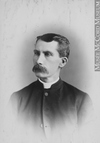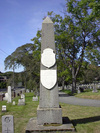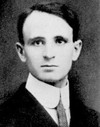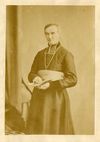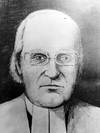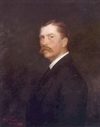.
Anglican Church of Canada, Diocese of Montreal Arch., Clergy files, Herbert Symonds; Episcopal journals, James Carmichael, 1907; J. C. Farthing, 1909, 1911, 1913, 1915, 1919–20. Committee of Sixteen
, who wanted to use the support of the nobility and the clergy to ensure the submission of the Canadians. In 1770 Lanaudière accompanied his superior to London as a representative of the colony’s
of the Clergy. Non-juring priests had to go underground or into exile: Thavenet sought refuge in London. Facing an influx of French priests, the British government agreed to give a number of them
of Anglo-Catholics and evangelicals within the church. In his charge to the 1909 Algoma synod he said, “Our clergy ought to be considerate, avoiding extremes, not given to forcing their own personal
religious and educational organizations disapproved of by the bishop and alliances with other evangelical clergy, including the sons of prominent Anglican families such as the Uniackes and the Cogswells. But
of Can., Diocese of N.S. and P.E.I. Arch. (Halifax), MG 1, ser.1, no.6 (Archbishop Clarendon Lamb Worrell papers); MG 8, ser.2 (diocesan registrar), vol.6, no.2 (clergy
only the deaf but also the government, the clergy, and the public, all of whom had originally been insensitive to the cause
, Adhémar and De Lisle went to Paris at the beginning of 1784 with a view to recruiting priests for the Canadian clergy. In order to concentrate their efforts on the recruiting question, the two delegates had
education and books. A Liberal in politics, the master tanner was personally involved, as a witness for the prosecution, in the famous 1876 trial for “undue influence” on the part of the clergy, following the
futility of consulting Rome about everything; nobody there knew anything about the problems currently preoccupying the Canadian clergy – for instance, the secret society of Oddfellows and the moral
formation of farm clubs, which with the support of the clergy operated at the parish level, and he was an ardent champion of their educational and economic activities. The clubs were not officially recognized
law governing the solemnization of marriage. He also supported bills for the sale of the clergy reserves, with the proceeds to be used for erecting schools, and for the regulation of juries. These bills
certain differences of opinion between members of the clergy responsible for the undertaking, the work came to a halt in 1892. It is thought that Bourassa himself only did wash drawings of St
abolition of the clergy reserves and of seigneurial tenure in Lower Canada. The latter was a clearly local issue and was dealt with by the Canadian parliament. But the clergy reserves, governed by an imperial
. . . (Ottawa, 1880), attempts to be fair in its examination of the work of the Anglican clergy but the author’s Presbyterian bias is evident. HBRS, XIX (Rich and Johnson) covers the turbulent decade of the 1840s
.
In 1832 Coster chaired a meeting at which it was suggested that there should be an annual convention of clergy, open to lay delegates, for the purposes of encouraging local support of the church in New
reform leader’s eyes, John declared his support for Baldwin’s view of responsible government but confessed his opposition to the idea of converting the clergy reserves into a fund for the support of
of portraits and religious scenes. Indeed his status was already virtually that of official painter to the socio-political elite, clergy, and middle class, not only of the capital and surrounding area
Liberal and called for an elective Legislative Council, secularization of the Upper Canadian clergy reserves, abolition of seigneurial tenure in Lower Canada, and reform of the financial machinery of
Montgomery*]. A large part of the Canadian nobility and bourgeoisie, as well as most of the Catholic clergy, came down in favour of defending Canada; however, on the whole the people remained neutral, and



